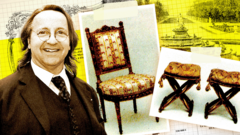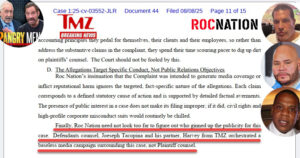In a scandal that rattled the French antiques community, two expert craftsmen—Georges “Bill” Pallot and Bruno Desnoues—were found guilty of creating fake 18th-century furniture, once believed to be artifacts from the Palace of Versailles. Their fraudulent production led to significant financial gains and highlighted the need for stricter regulations in the art and antiques markets.
The Versailles Furniture Scam: A Shocking Tale of Deceit in the Antiques World

The Versailles Furniture Scam: A Shocking Tale of Deceit in the Antiques World
Two renowned craftsmen orchestrated an elaborate scheme to forge royal furniture, defrauding high-profile collectors and museums, including the Palace of Versailles.
The story of the Versailles furniture fraud dates back to the early 2010s when a pair of ornate chairs, believed to be linked to Marie Antoinette, hit the French antiques scene. Initially declared “national treasures” by the French government, these pieces caught the attention of the Palace of Versailles, which sought to buy them but was deterred by their high price tag. Ultimately, Qatari Prince Mohammed bin Hamad Al Thani acquired the chairs for a staggering €2m (£1.67m).
In recent years, numerous items of 18th-century royal furniture surfaced, attracting attention from collectors and prompting purchases from Versailles' museum collection. However, by 2016, these once-coveted chairs were at the center of a scandal that revealed their true identity as clever reproductions.
The investigation unearthed charges against two prominent figures in the furniture industry—Pallot, a recognized antiques expert, and Desnoues, a celebrated cabinetmaker. Both men faced allegations of fraud and money laundering following a lengthy inquiry into their operations. Pallot and Desnoues, known for their craftsmanship, admitted to creating fakes that fooled experts.
The scam began in 2007 as a playful experiment but evolved into a sophisticated operation. Pallot confessed to sourcing inexpensive wood frames from various auctions while Desnoues perfected techniques to age wood. They utilized authentic stamps from historic furniture makers to enhance the credibility of their reproductions, which were then sold via middlemen to galleries, including Galerie Kraemer.
Estimates suggested that the duo profited over €3m from their deceptive activities, leading to significant scrutiny and legal action. Versailles' legal team highlighted that Pallot misused his privileged access to museum archives to recreate items that were cataloged but missing from the royal collection.
As authorities caught wind of the illicit operation, the downfall of the scheme began with a routine investigation into a handyman's finances, which grew into inquiries about Pallot and Desnoues. While charges against some involved parties were dropped, charges against Galerie Kraemer sustained, with prosecutors arguing that the gallery exhibited gross negligence by failing to verify the authenticity of the pieces before reselling them.
Pallot's previous reputation as an art expert, often sought after for his authentication skills, raises questions about trust within the antiques market. This case has sparked discussions on the need for increased regulations and oversight within the art community, emphasizing the significance of due diligence in the sale of high-value historical items.
As the trial concludes, the implications of this fraudulent scheme ripple through the art world, challenging both institutions and collectors to reconsider their approaches to authenticity verification and trust in the market.
















